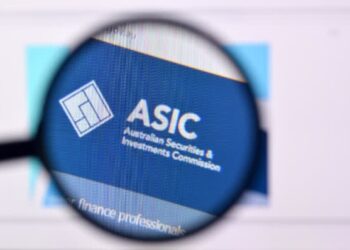The new Business Health and Praemium report, titled Practice management by the numbers, compared financial data from over 300 advice firms nationally and found that the average revenue earned per client was $3,558.
The report suggested practices charging significantly higher than this amount were those “providing highly technical services/advice to high-net-worth clients”, while practices charging less than this may be “deliberately focused on a lower-net-worth clientele”.
However, the consulting firm urged businesses with fee levels below the average to consider whether they were delivering their services profitably and if they could afford to keep servicing some types of clients.
“Are there some clients who are receiving much more from your practice than their fee justifies – perhaps they are taking up a disproportionate amount of your time and resources for example,” the report suggested.
“Most likely, your staff will know. Is it time to review their fees and/or move them on?”
The report also revealed that the average number of clients per adviser was 421, with higher client numbers indicating a practice was leveraging technology to drive efficiency and had a strong people management strategy in place, while lower numbers indicated a practice could have a “capability or skills issue in play”.
Business Health said advisers servicing significantly less clients than this needed to assess the balance of time being spent on tasks that were not core to their role.
Further, the report said the average firm spent around 44 per cent of revenue on staff salaries, 6 per cent of revenue on rent, and had approximately 1.1 support staff member per adviser.
Firms also had an average of 4.23 out of five in terms of client satisfaction ratings, and a notional profitability of 28.2 per cent.
Business Health said while there could be good reasons for advice firms to be less profitable than others – for instance if they were scaling up or in start-up mode – practice principals should address some of the key metrics around efficiency and costs to see which should be tweaked.
“Review your revenue flows over the past three or so years. Has it been steadily growing, remaining static or declining? What have been the drivers?” the report said.
“The biggest expense items for most practices are; salaries, licensee fee, technology and rent. When was the last time you thought about the cost-benefit of each? Does outsourcing provide another option?”




These numbers aren’t stacking up…..421 x 3.6K = 1.5M!!!! per adviser with 1.1 support staff. There is clearly a disconnect in the numbers which will give the many practices, trying to get their business models sorted a whole bunch of false metrics. Can we get the true story pls? I have some pretty strong views on this from coaching 250+ practices and see the next few years as vital for our profession. Lets get the numbers right please.
This is why I’ve had enough. Absolute Muppets setting the rules around what we can and can’t do and what we are and aren’t doing. 421 average active clients? What do they get? A 10 min phone review once a year? Even better, a nice shiny report once a year? Sounds like an analysis done on a Robo advice practice if you ask me.
The cost of advice is so much more expensive than it needs to be due to over regulation. The regulation was put in place to somehow improve ethics in the industry and try and weed out the few rogue advisors. Now the price that has to be charged to cover costs is so high that it is unethical.
Consider the average income in Australia and then expecting people to spend roughly 5% of that on financial advice is not realistic.
So much good advice at the level most people actually need could be done for about $500 per year and $3,000 just for those major life event periods.
But impossible in the current environment.
The 421 clients per advisor, paying the figures quoted is about as realistic as the entire world becoming loved up hippies with no conflict and communism working for all!
421 clients, wow!! That would require 2 reviews a day, and that’s being generous. When you add the file notes, actually doing the analysis for the review, that adviser would have to be working 18 hour days 7 days a week – even with technology that data set just shows us why our profession was attacked at the royal commission!
I also agree, I would hope the people who did this analysis read our comments and maybe Sarah Kendall goes back to the researchers and we get a response, because anyone who knows anything about running an advice business says these numbers are not real.
Agreed with others here. 421 average clients? Not in the current regime. That would be impossible to service. I manage 120 active client groups and could take on about 40 more before being fully tapped. To handle more you would need a junior adviser or such to hand ball most of the work off too.
The only way you could have 421 average clients is if you had passive insurance clients etc, that are not being annually reviewed. Or maybe they are counting a husband and wife as 2 clients etc, even still that seems too high to be practical.
Client numbers aside, the fees seem about right for a 30% EBIT for most modern practices. Our cost to serve with that profit level comes in at $3,900 for the average client group.
Is this client’s or client groups?
Wowsers…
What an irrelevant set of data without context, bell-curving, referencing, etc.
This article may as well have been a recipe for pancakes for all the use it services to us advisers in business.
These are probably the same people that maintain risk advisers can charge mum and dad clients many thousands for risk advice in fees and that we should stop commissions.
It is a shit report written by someone who has never sat in front of a client. We should just stop listening to these agenda driven, ignorant dopes.
Agree with comments below. The headline was catchy and of keen interest to me (and I assume most advisers) but unfortunately did not offer anything remotely meaningful. A worthless article overall.
Looks like they print any old rubbish served up here at IFA?
Agree 421 clients lost me as well. Speaks volumes for accuracy of Business Health surveys to my thinking and needs to be clarified. A $1.5 million business with one licensed advisor seems diffrent to all the advisors I speak to regularly
421 clients per adviser at $3558 income per client is $1.5m per year income per adviser. 1.1 support staff per adviser, with 44% of revenue or $660k per year spent on support staff. Dont think so
I dunno about anyone else, but I could not service 421 clients. About 165-200 is all you can realistically service, assuming quarterly appointments.
200 clients…800 review appointment a year. When you take out leave, puplic holidays, ongoing training etc. you have about 40-42 working weeks. .. so you are running 19 appointments a week…you cannot do this if you are writing notes, getting SOAs checked etc without help.
Sounds like you are doing quarterly reviews. Which means you are probably over servicing. Or perhaps trying to act as a quasi fund manager chasing the market. But quarterly reviews are quite unnecessary for strategic, long term, financial advice.
I stopped reading when it said the average number of clients per adviser was 421. Was this survey limited to AMP advisers? You cannot possible be running a compliant business in 2021 with annual renewals with 421 clients. Further, it states, the average fee per client was $3,558…. that would mean the average revenue per adviser, having 421 clients would be just under $1.5 million. Further It stated 44% of costs were spent on salaries that means $660,000 is spent on wages split between the 1.1 support staff.
Hear Hear!
Good analysis, but on a lighter note, you couldn’t have “stopped reading” as these information were quoted well after it said the ridiculous average number. Note, ASIC’s threshold for number of client per adviser is 200 above which the advisers are automatically flagged in ASIC’s system for heightened risk for compliance and thus additional monitoring requirements
How does ASIC know how many clients an adviser has? I have never heard of this metric being captured or reported in any regulatory system.
My point exactly, Michelle. These numbers are all over the shop, so clearly can’t be believed.
Ouch- BH got caught out !
I think there is an error in the number being used. It is probably 421 average “clients” including those that aren’t paying an ongoing fee / being serviced ongoing.
I know for myself I have ~100 ‘real clients’ but at least 400 all up if you include the non-fee paying that might come for episodic advice now and then.
Sorry, something’s not adding up here. If the average adviser has 421 clients, he’d be seeing about 2 each working day of the year, and that’s if he’s only seeing them once! He’d also be bringing in about $1.5m and there’s NO WAY the average adviser is doing that! Anyone who IS doing this kind of numbers is overcharging by a LONG way if they’re attempting to service THAT many clients.
all with 1.1 support staff too.